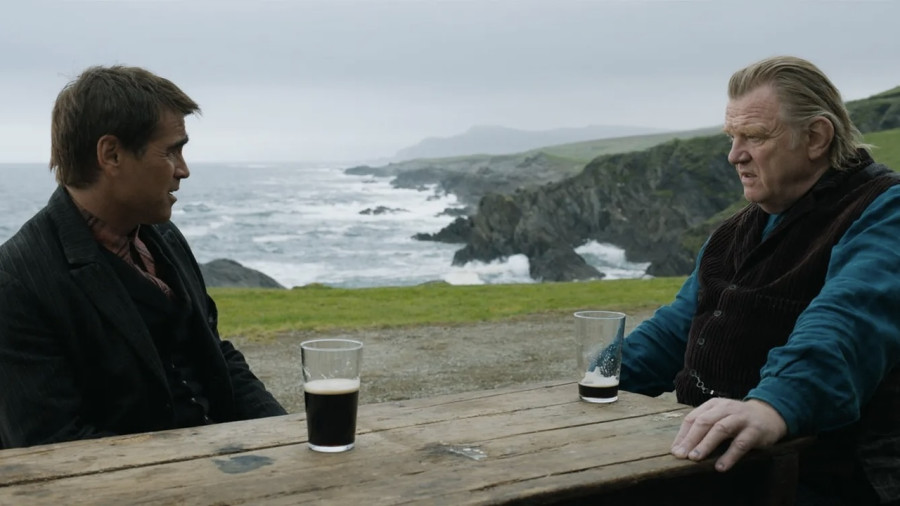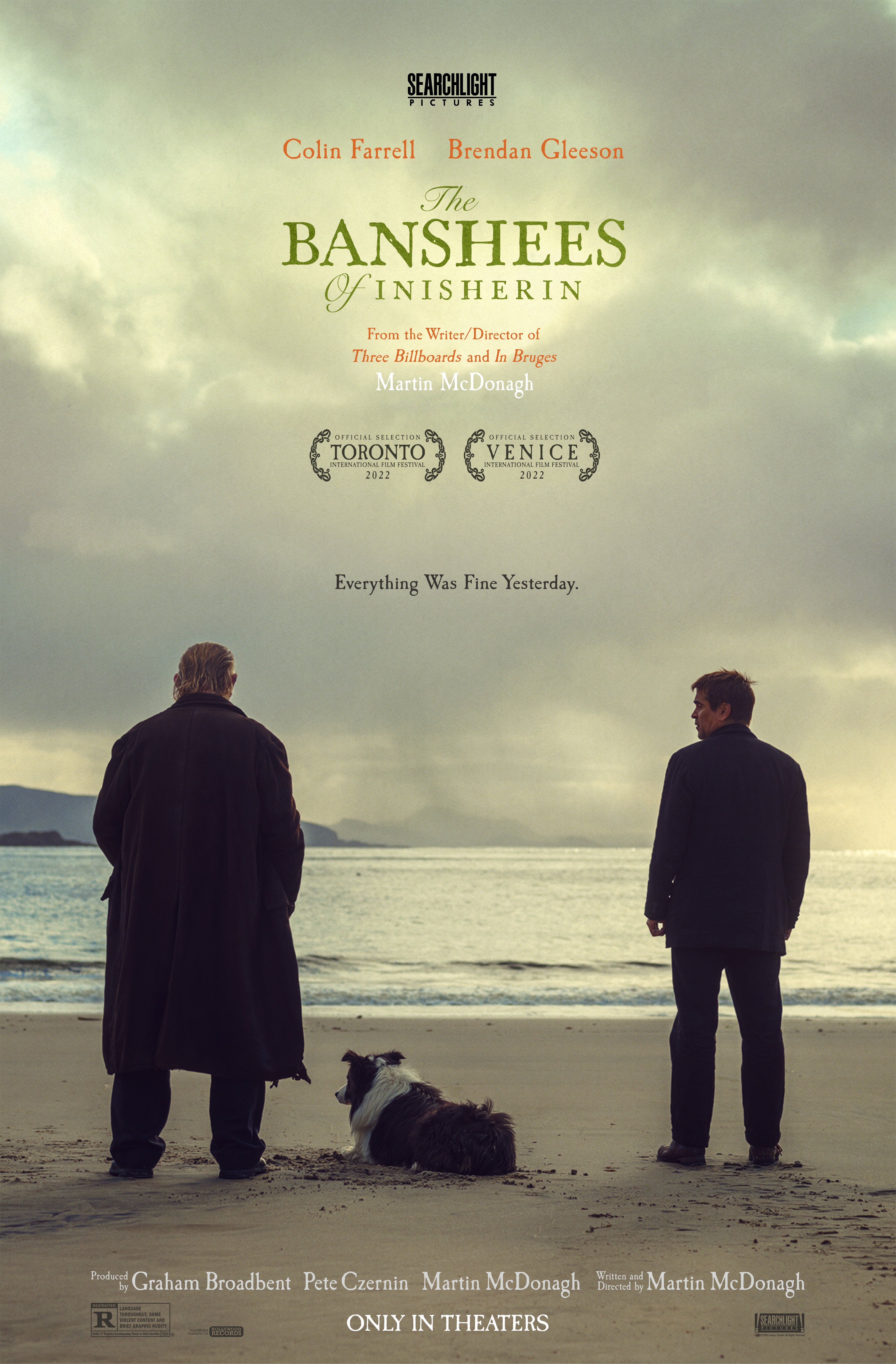Movies
A classic tragicomedy
Martin McDonagh’s ‘The Banshees of Inisherin’ explores themes of friendship, betrayal and redemption during the Irish Civil War.
Aarati Ray
In Martin McDonagh’s magnum opus ‘The Banshees of Inisherin’, which was screened at the opening of the 13th Nepal European Union Film Festival last week, viewers are transported to the 1920s Ireland, where the windswept shores of a remote island form the backdrop for civil unrest and personal chaos of loneliness, isolation, self-discovery and redemption.
Prior to viewing the film, I had seen its poster featuring the line “Everything was fine yesterday.” This line is a subtle clue for viewers, encapsulating a central theme of the movie.
As expected, a significant character in the movie attempts to understand what went wrong and tries to rectify the situation, aiming to return to the time when everything was fine. However, contrary to typical movie narratives where initial problems and conflicts are resolved, this does not occur in ‘The Banshees of Inisherin’.
In contrast, the situation continues to worsen, and the idea of returning to the past when “everything was fine” becomes an unattainable longing. I believe this factor of loss and longing for the past which is impossible, adds depth to the movie.
If you look at it simply, the movie is about a break-up between two friends Pádraic (Colin Farrell), and Colm (Brendan Gleeson). But on a deeper level, it is a tragicomedy of a break-up between the Irish and the Irish during the Irish Civil War from 1922 to 1923.
The film begins in a pub where Pádraic is deeply upset by Colm’s decision to end their lifelong friendship. With support from his sister Siobhán and a troubled islander-village fool named Dominic, Pádraic attempts to reconcile with Colm. However, Colm’s determination leads to unexpected and dramatic outcomes.
At the heart of the film is the on-screen chemistry of Colin Farrell and Brendan Gleeson. Farrell plays Pádraic, a simple islander with a vulnerable and innocent character. Gleeson plays Colm, an older contemplative man who seems strong but hides his inner struggles underneath his stoicism.
The bond between Pádraic and Colm is the main emotional focus of the movie. Their friendship is tested by time and their fears about life and death. McDonagh, the director, explores their relationship, looking at themes like loyalty, betrayal, and finding purpose in a confusing world.
One of the highlights of the movie is its blend of emotionally resonant and thought-provoking scenes, as McDonagh has effortlessly mixed the moments of fun and comedy with deeper tragic themes. One moment, you are laughing at the funny jokes and naivety of the characters and the ridiculousness of the situation, and the next, the same funny jokes throw you unprepared for the heavy tragedy and make you feel guilty for laughing.
Through Pádraic and Colm’s fractured friendship, the movie invites audiences to confront their fears and insecurities, and the consequences of their actions. One of the film’s greatest strengths is its refusal to offer easy answers or neatly tie up its narratives and storyline threads.
Instead, there is ambiguity everywhere, allowing the characters to walk the cloudy waters of guilt, regret, and redemption—a message perhaps urging us to embrace life's uncertainties. Life isn’t simply black and white; it’s filled with shades of grey, adding to its complexity and unpredictability.
Supporting actors Kerry Condon and Barry Keoghan add depth to the ongoing conflict in the movie, with Condon bringing warmth and compassion to the role of Siobhán, Pádraic's sister, and Keoghan delivering a standout performance as Dominic, a troubled young islander whose presence catalyses much of the film’s conflict.
One aspect I particularly liked was the portrayal of Dominic’s character. In the beginning, he just seems like a village fool to the audience, but later he evolves into the most tragic figure, overshadowing even the central characters’ tragedies. The director’s bold decision to shift focus to such a secondary character is both risky and compelling.
Similarly, the parallels drawn between the relationships of Pádraic and Colm, and Pádraic and Dominic, expose the underlying hypocrisy in the world. While Pádraic finds solace in Dominic being perceived as a jest, he also dreads being viewed in the same light. Colm’s treatment of Dominic mirrors Pádraic’s treatment of Colm.
Moreover, Dominic’s exit from the movie is around the same time as Pádraic’s decision to seek revenge, symbolising how it was not Pádraic who was the symbol of innocence and decency in the movie, but maybe the village fool Dominic.
The film’s visuals are also noteworthy. Cinematographer Ben Davis skillfully captures the natural beauty of the setting, from lush green hills to crashing waves along the coastline, allowing viewers to fully immerse themselves in the landscape.
Whether it’s the soft light filtering through a window or the harsh glare of the midday sun, Davis has captured the ever-changing moods of the island through aerial shots and intimate close-ups, which resonate and contrast with intimate moments between characters and their changing moods as well.
The film’s sound design is also noteworthy, as the haunting sound of the banshee’s wail echoes throughout the island, heightening the eerie and dark atmosphere of certain scenes.
One thing that cannot go unmentioned is how ‘The Banshees of Inisherin’ is a perfect example of tragicomedy, as it meets all Aristotle’s criteria for tragic comedy presenting complex characters, engaging conflicts, a mix of comedy and tragedy, and ultimately, producing a cathartic response from the audience.
The characters in the film are multidimensional, with both flaws and virtues. Pádraic is portrayed as naive and simple-minded but also kind-hearted and loyal. On the other hand, Colm is gruff and stoic but also deeply troubled, seeking meaning in his life through music. This complexity allows for moments of both humour and pathos.
Aristotle believed that tragic comedy should produce both pity and fear in the audience, leading to a purging or cleansing of emotions known as catharsis. ‘The Banshees of Inisherin’ achieves this by immersing viewers in the characters’ struggles and conflicts. It gives us sad moments but also some funny ones to break the tension. The perfect mix of sharp dialogue and witty banter provides comedic relief throughout the film, even as it shows darker themes of loneliness, mortality, and loss.
That being said, it’s not that the movie doesn’t have any flaws. In its attempt to deliver a tragicomedy, the rising action when Colm continues to cut off his fingers feels too much of an exaggerated response and feels completely ridiculous. The donkey dying by choking on Colm’s fingers, too, feels exaggerated.
One guy not wanting to be another guy’s friend anymore, evolving into a life-and-death situation, makes it too ridiculous and foolish for the audience to connect with the reality of the Irish Civil War at some point. Similarly, the movie’s attempt at ambiguity and incomplete narratives doesn’t help much for it.
While ‘The Banshees of Inisherin’ is not without its flaws, particularly in its decision to leave certain aspects of the plot unexplained, these shortcomings are overshadowed by the film’s many strengths, which manage to leave a lasting impression on the audience. So, if you are a fan of dark comedy and slow-paced movies, this is a must-watch for you.
The Banshees of Inisherin

Director: Martin McDonagh
Cast: Colin Farrell, Brendan Gleeson, Barry Keoghan and Kerry Condon
Year: 2022
Language: English
Duration: 1 hour 54 minutes




 13.12°C Kathmandu
13.12°C Kathmandu














